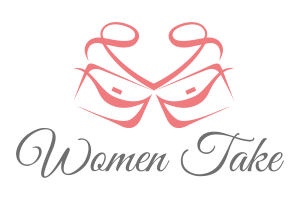
Beauty standards for women have been changing continuously over time and they are becoming always harder to achieve. Among the many reasons that caused these changes, some factors are exclusively cultural, while others are just related to the trends and fads of the moment.
Historically, what is considered beautiful varies depending on what region or continent you are examining. However, today, with the spread of social media networks, and internet providers like xfinity internet providing the means for us to be constantly connected to these networks, plus a standardized idea of beauty, the differences that distinguished women across the world are fading away.
Let’s have a look at the main reasons that caused these changes and what the consequences have been.
The Factors That Are Influencing Today’s Beauty Standards.
Social Media Platforms
Social Media platforms are a great way for people around the world to meet, share ideas, and communicate past and present experiences. However, today, users and influencers are portraying an idea of beauty that can be hard to achieve for most women.
Moreover, it reflects the concept of western female attractiveness. This often involves fair skin, delicate features, and a slender but busty body.
Since they are often spreading overly filtered and unrealistic images, Social Media networks have been correlated to the increasing body image concerns that affect most women today.
Unrealistic expectations and body goals have today created a general drop in self-confidence among women across the world. While inspirational stories and posts are available to be read by anyone, it can be complicated for fuller or curvy women to adapt to this image which is often impossible to achieve. This is why many look for services offering cosmetic fillers in Houston, TX and elsewhere to achieve the full lips and high cheekbones seen so often on social media.
Cultural Influences
Since the 1990s, women have been subjected to idealized images that have changed the conception of what is deemed attractive and what is not. Portrays of unachievable standards and photos of thin supermodels have been broadcast increasingly on screens, magazines, and online blogs during the past 20 years.
This has been proven to have decreased the self-esteem of women across the world, which have since then tried to comply with impossible standards.
This has not only increased the likelihood of eating and social disorders, but it has also pushed women to change their looks and features to try to achieve unrealistic ideals. Over time, this has led women to refuse regional or continental beauty traits in order to look more like western supermodels.
An example of this is the spread of whitening face cream, now available in most Eastern countries: the beauty standards that millions of women across Southeast Asia are referring to is something that it is unlikely to be achievable. Ultimately, these damaging trends have pushed them to embrace western requirements and favor them over their own preferences.
Naivety
While women’s ideas and mentality are today conditioned by the large number of photos and videos that they are subjected to every day, there is a general lack of awareness of the tricks used by influencers and models to perfect their look.
A 2015 study found that women that have undertaken a media distortion course are less likely to be conned by images on networks and channels. This can ultimately help women to reconcile with a more natural idea of beauty, but the solution has not been fully embraced yet.
As a result, women have been found extremely vulnerable and easily misled by heavily filtered media. Moreover, often they are unable to discern what is real from what is not, in terms of social media photos and posts.
How Have These Factors Affected Women Across the World?
Abandoning of Cultural Traits
Women in Japan have been always reflecting the standards of their culture. Curvy features have always been associated with wealth and fertility through this country’s history. Today the requirements have changed, and women have been refusing the costumes, makeup, and physical traits that were characterizing their culture.
More than 30% of Japanese women have been declared underweight or suffering from social disorders caused by the need to comply with western standards.
While this is only an example, the western media images that reach Asian, Latino or African countries portray an idea of beauty that can be very hard to achieve for other ethnic groups. Moreover, the perception of beauty has been changing and often peer pressure coming from friends, neighbors, and partners can be a contributing factor to the general malaise of women around the world.
Eating Disorders
A peak in women that reported suffering from eating disorders has been recorded towards the end of the 90s. While this happened along with the increasing global broadcast of idealized thin models, the issue has been carrying on and it is today a condition that affects millions of women across the world.
The most common disorders are Bulimia nervosa and Anorexia nervosa, both often caused by peer pressure, negative social influence, and a distorted perception of reality.
Social Media platforms have been responsible for the steady increase in these conditions, which now affect not only western countries. However, a new “fitspiration” movement has been spreading through channels and networks to encourage women to see where and how the distortion happens. Some of them even tend to get help from an Eating Disorder Coach Counselor to help them get back into a healthy body. Well, the ones who are aware that they have been a victim of one such condition and the negativity they have about their body image is a result of this disorder, can certainly get benefit from a coach or a similar dietician. However, the case is not the same with everyone, and some might need to undergo eating disorder counselling through hypnotherapy or a similar practice. While these solutions can help women globally, providing them a positive effect, the worldwide damage is still unsolved and has a long way to go.
Perceived Decrease of Opportunities
An increase in the last decade of plastic surgery procedures has pushed experts to deepen the studies conducted in Asian and Latino countries. It has been seen that Western beauty standards have been negatively affecting the idea that women have of themselves.
In India and Lebanon, women have been driven to undertake plastic surgery procedures as they believe that this will open better job and career opportunities. In many industries, this is the reality and often women are preferred to look in a specific way, especially singers, piano players, and when working in customer-facing roles.
Conclusion
The Western beauty standards have been changing over time and they are today stricter than ever and almost impossible to achieve.
While in the early days only western women were affected by these images, today a large percentage of the female population globally is suffering from eating, social, and low self-esteem disorders deriving from peer and media pressure.
While there is an increasing awareness of this issue, women are still suffering while trying to achieve an idealized idea of beauty.











Leave a Comment